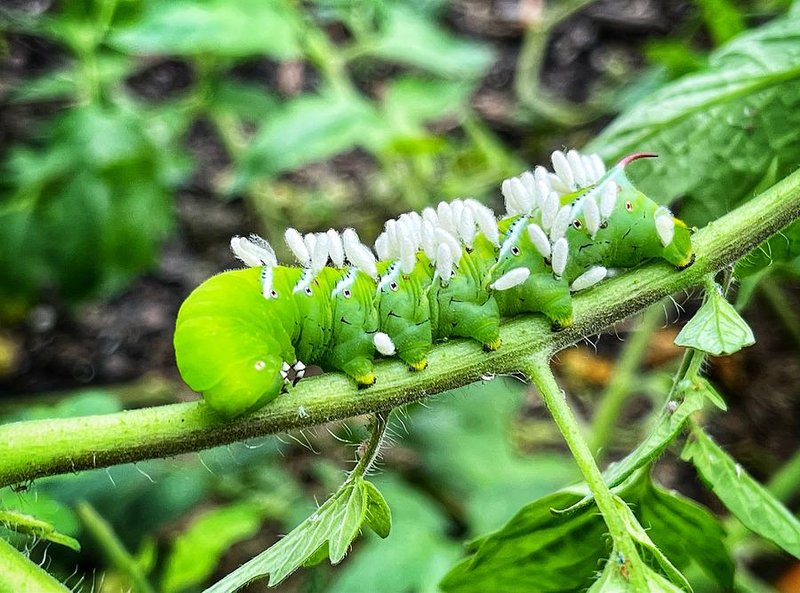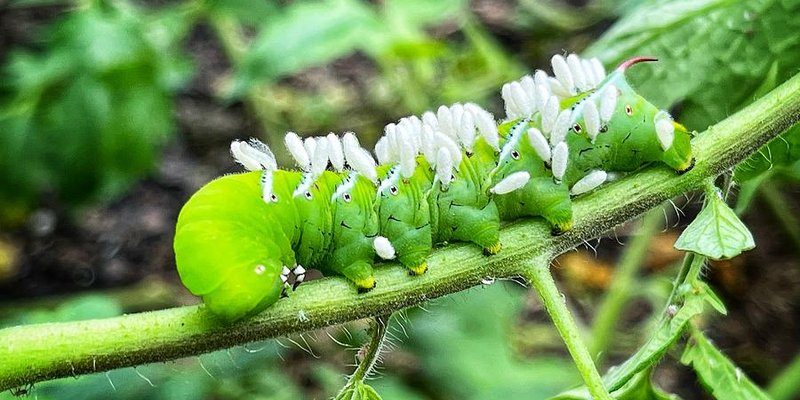
Imagine you’re sipping coffee with a friend who’s curious about how hornworms operate throughout the year. You might explain that these caterpillars are primarily the larvae of the hawk moth, and they play a significant role in gardens and ecosystems. Let’s dive into the shifting habits of hornworms as the seasons change, reflecting on their life cycle, feeding patterns, and even their interactions with the environment.
Spring Awakening: The Start of a New Life
Spring is a vibrant time when nature begins to wake up from its winter slumber. For hornworms, this season marks the start of their life cycle. As temperatures rise and plants begin to sprout, these caterpillars emerge from their pupae. It’s like a parade of tiny, hungry munchers ready to feast!
During spring, hornworms primarily target lush, young plants, especially tomatoes and peppers. They’re like kids in a candy store, enjoying all the new leaves that sprout up. This is when their **feeding behavior** becomes most active. They can strip a plant of its leaves in no time, and you might find yourself battling these little pests in your garden. To curb their munching, planting companion plants or using natural predators can be helpful.
You might be wondering how they know it’s time to come out. Well, hornworms are sensitive to **environmental cues** such as temperature and plant availability. Warmer days signal to them that it’s time to break free from their winter cocoon. This connection to their surroundings is a vital part of their survival strategy.
Summer Sustenance: The Hungry Caterpillar Phase
As summer rolls in, hornworms enter their peak eating phase. Picture a teenager with an insatiable appetite! During this time, they grow rapidly, often inching their way to several inches in length. Their sole focus? Eating! Hornworms can consume massive amounts of foliage during the summer months, making them a gardener’s worst nightmare.
During this phase, hornworms also exhibit interesting behaviors. They tend to **blend in with their surroundings** to avoid predators, thanks to their green coloration. It’s like they’re playing hide-and-seek! If you’ve ever wandered through a garden and spotted one, it’s a mix of luck and keen eyesight.
You may also notice that hornworms become more active in the evening and at night. This nocturnal behavior helps them avoid the heat of the day and provides them a safer time to feast. They may also seek out specific plants, preferring those that provide the best nutrition, much like we choose healthy meals. This attention to diet is crucial for their growth and eventual transformation.
Autumn: Preparing for Metamorphosis
As autumn approaches, the days get shorter and cooler, and hornworms start preparing for their big change. This season is pivotal for them—it’s when they begin to transition from caterpillars to moths. They know that winter is right around the corner, and they need to get ready to survive until spring.
During this time, hornworms will often find a secure place to pupate. They might dig into the soil or hide under leaves, creating a **cocoon** to protect themselves. This moment can be quite dramatic; it’s as if they’re diving into a cozy blanket for a long nap! This stage of their life cycle can take a few weeks, and it’s crucial for their transformation into the adult moths.
You might be asking why this change is essential. By metamorphosing into moths, hornworms can survive winter as pupae. This strategy allows them to emerge when conditions are just right in spring, ready to continue their life cycle.
Winter: Surviving the Cold
Now, winter is a different story. For hornworms, it’s all about survival. They won’t be feasting on plants or crawling around; instead, they’re in a state of dormancy. Think of them as hibernating bears but in a much smaller package.
During the cold months, hornworms stay in their pupal stage, nestled in the ground or hidden amongst debris. This is the time they rely heavily on their protective cocoons. The colder temperatures cause their metabolism to slow down, allowing them to conserve energy until the warmth of spring returns.
While it might seem like they’re just sitting around, this pause is vital for their survival. If the conditions are harsh enough, not all of them will make it to spring. However, for those that do, it’s a fresh start, much like a butterfly emerging from its cocoon.
Hornworms are a perfect example of how life adapts and thrives in rhythm with the seasons. Each time of year brings new challenges and opportunities for these fascinating creatures. From their awakening in spring to their busy summer, followed by preparation in autumn, and dormancy in winter, hornworms truly embody the cycle of life.
Understanding their behavior can guide you in managing them in your garden and appreciating the intricate relationships in nature. Whether you’re a passionate gardener or simply curious about these caterpillars, their journey throughout the seasons is a remarkable story of resilience and adaptation. So next time you spot a hornworm, take a moment to think about the busy life it leads throughout the year!

